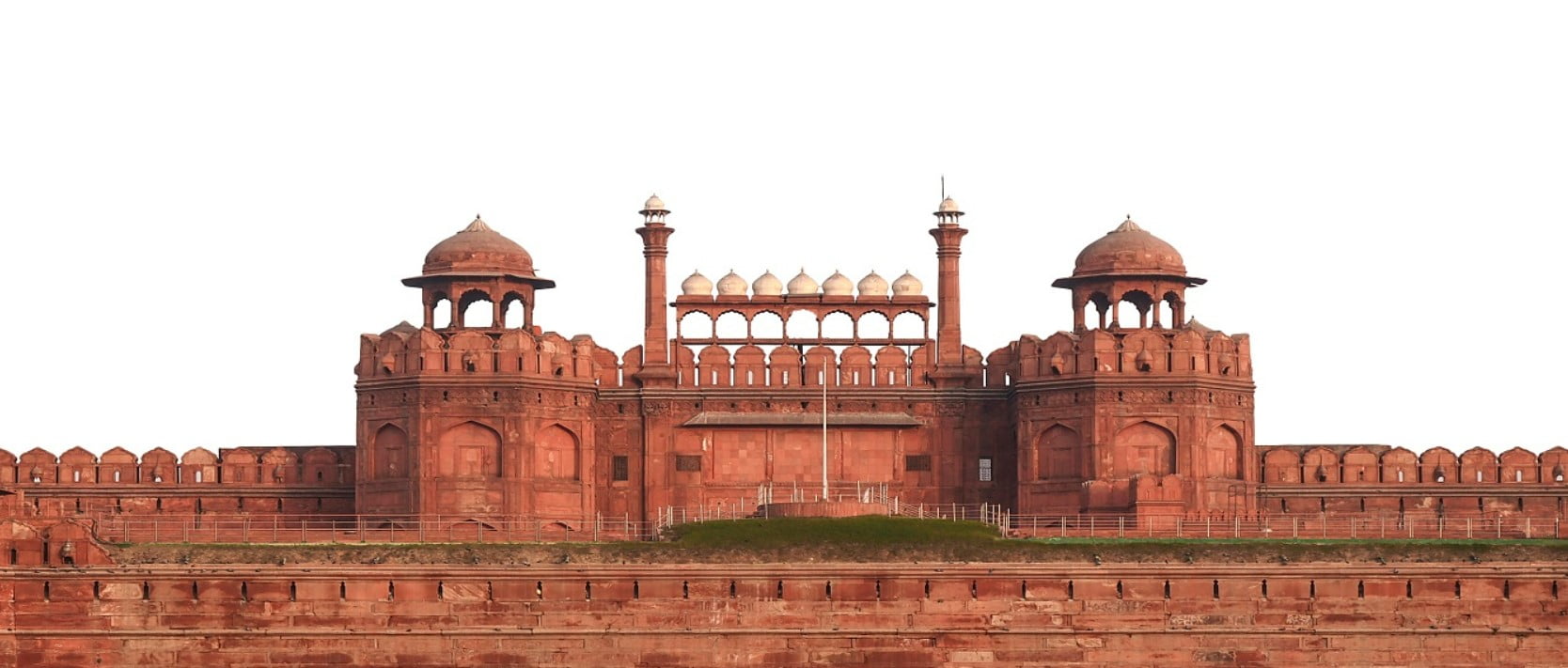The Red Fort, also known as the “Lal Qila,” is a historic fort located in the city of Delhi, India. The fort was built by the Mughal Emperor Shah Jahan in the mid-17th century and is considered one of the most important architectural and cultural landmarks in the country.
The construction of the Red Fort began in 1639 and was completed in 1648. The fort is built of red sandstone, which is why it is called the “Red Fort.” The fort is octagonal in shape and is surrounded by high walls, which were once guarded by soldiers to protect the emperor and his family. The fort also contains several palaces, courtyards, and gardens, all of which were designed to reflect the grandeur and opulence of the Mughal court.

One of the most important features of the Red Fort is the Diwan-i-Aam, or the “Hall of Public Audiences.” This was the place where the emperor would meet and interact with his subjects. The Diwan-i-Aam is a large open courtyard surrounded by arched colonnades and is adorned with intricate carvings and frescoes.
Another important feature of the Red Fort is the Diwan-i-Khas, or the “Hall of Private Audiences.” This was the place where the emperor would meet with important dignitaries and hold private audiences. The Diwan-i-Khas is a small, enclosed chamber that is richly decorated with inlaid marble and precious stones.
The Red Fort is also home to the famous “Pearl Mosque,” which is adorned with intricate carvings and inlaid marble. The mosque is a beautiful example of Mughal architecture and is one of the most visited parts of the fort.
The Red Fort is also significant for its role in Indian history. On August 15th, 1947, India’s first Prime Minister Jawaharlal Nehru gave his famous “Tryst with Destiny” speech from the ramparts of the Red Fort, in which he declared India’s independence from British rule. Today, the fort is a popular tourist destination and a symbol of India’s rich cultural heritage.
The Red Fort in Delhi is not just a historical monument, but also an important cultural symbol of India’s rich heritage. The fort’s architectural and artistic beauty reflect the grandeur and opulence of the Mughal Empire, while its historical significance serves as a reminder of India’s struggle for independence. Today, the Red Fort continues to be an important tourist destination and a must-see attraction for anyone visiting Delhi.
The Red Fort is also significant for its role in Indian culture. The fort is a UNESCO World Heritage Site and is considered one of the most important architectural and cultural landmarks in India. It is also the site of the annual Independence Day parade, where the Indian Prime Minister hoists the national flag and delivers a speech to the nation. This event is attended by thousands of people and is a symbol of national unity and pride.
Furthermore, The Red Fort is also a popular destination for film shoots and music videos, as its grand architecture and rich history provides a perfect backdrop for various projects. Many Bollywood movies have featured the Red Fort, showcasing its rich cultural heritage to a wider audience.
The fort is also an important center of Islamic culture and tradition. Many Islamic scholars and spiritual leaders have visited the fort over the years, and it is considered an important site for Islamic studies and research.
In recent years, the government of India has undertaken several restoration and preservation efforts to maintain the Red Fort in its original condition. These efforts have included the restoration of the Diwan-i-Aam and Diwan-i-Khas, the Pearl Mosque, and the fort’s gardens and courtyards.
Visitors to the Red Fort can also take a guided tour of the fort, which provides detailed information about its history, architecture, and cultural significance. Visitors can also learn about the daily life of the Mughal Emperor and his court, as well as the customs and traditions of the Mughal Empire.
In conclusion, the Red Fort in Delhi is an important cultural and historical landmark that has played a significant role in Indian history and culture. Its architectural beauty and rich cultural heritage make it a popular tourist destination and a symbol of national pride. The fort’s restoration and preservation efforts ensure that future generations can continue to appreciate and learn from its rich history and culture.
Leave a Reply